
10 Best Text-to-Speech APIs for Software Developers in 2023
by Oliver Goodwin | May 26, 2023
Reading Time: 8 minutes

Text-to-Speech technology has revolutionized how we interact with written content, offering a seamless auditory experience. This article delves into text-to-speech APIs, exploring the top options available and guiding you toward the best choices based on your needs.
The demand for natural-sounding speech that can effortlessly convert written text into lifelike audio content is rising in today’s fast-paced digital world. However, finding the right text-to-speech solution that meets your requirements can be daunting. The lack of clear information, overwhelming options, and varying quality levels make this choice very complex.
Have you ever struggled to find a text-to-speech API that delivers accurate transcriptions, lifelike voices, and supports multiple languages? Are you tired of spending hours researching, testing, and comparing different text-to-speech providers, only to end up with subpar results or complex integrations?
Fret not, as we have done the groundwork for you. Whether you are a developer, content creator, or business owner, we will provide the necessary insights to make an informed decision and enhance your text-to-speech experience.
In this article, we will explore what exactly a text-to-speech API is and how it functions. We will also dive into a detailed review of the top ten text-to-speech APIs, examining their features, benefits, and pricing. Additionally, we have compiled a list of frequently asked questions (FAQs) to address the common queries and provide further clarity.

What is A Text-to-Speech API, and How Does It Work?
A text-to-speech application programming interface (API) is a powerful technology that enables developers to convert written text into lifelike speech using artificial intelligence and machine learning algorithms. It allows applications, websites, and other digital platforms to generate natural-sounding audio output from textual content.
Below are the steps that explain how a text-to-speech API functioning works:
- Text Analysis and Processing: The text-to-speech API analyses text, breaking it into smaller units such as sentences, phrases, or individual words. It considers punctuation, capitalization, and formatting to ensure accurate and natural speech output. This process involves Natural Language Processing (NLP) techniques and machine learning models to interpret the text effectively.
- Linguistic Processing and Voice Generation: Using advanced linguistic rules and algorithms, the text-to-speech API interprets the text and determines the appropriate pronunciation, intonation, and emphasis. It applies Speech Synthesis Markup Language (SSML) and machine learning technology to generate natural and human-like speech. The API leverages a wide range of high-quality voices, including multiple languages and various speaking styles, to offer diverse options for audio output.
- Audio Playback and Integration: Once the speech synthesis process is complete, the text-to-speech API delivers the synthesized audio in a suitable format, such as WAV or MP3. Developers can seamlessly integrate this audio playback into their applications, websites, or services. The API provides easy-to-use interfaces, allowing developers to incorporate text-to-speech capabilities effortlessly.
Using a text-to-speech API, developers can create applications with realistic voices, customizing the speech output to suit specific needs. In addition, these text-to-speech APIs enable the conversion of written text into spoken words, making it ideal for applications such as e-learning platforms, voice-based apps, video editing, and more.
Lastly, text-to-speech APIs support multiple languages, allowing users to experience lifelike speech in their preferred language.

The Best 10 Text-to-Speech APIs you Should Know
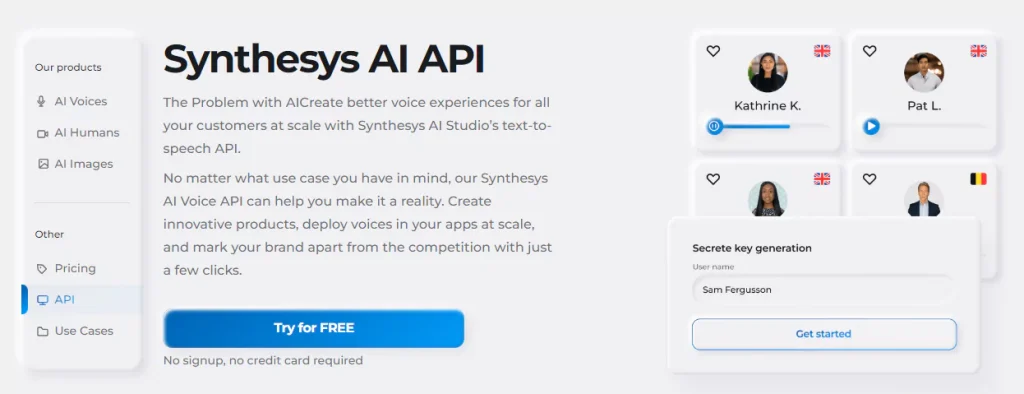
Synthesys is an AI voice generator with a leading text-to-speech API that offers natural-sounding voices with lifelike intonations and high-quality audio. With its extensive language support and customizable speech styles, Synthesys provides an excellent choice for applications requiring human-like voices and accurate speech synthesis.
Its vast library of languages also proves that it is versatile for various global applications. Let us take a look at the features and benefits that developers, content creators, and business owners stand to enjoy by opting for this API.
Key Features and Benefits:
- The Synthesys text-to-speech API supports 140 different languages across every continent in the world. This makes the API cosmopolitan.
- It contains a library of 374 unique voices.
- It is super user-friendly and does not take much effort or involve any convoluted process.
- The API has 31 programming language variations, which means it considers any kind of developer. Good news for programmers.
- It offers 25 requests per minute, two hours of audio per day, and a 300-character limit per request for the Lifelike plan and 4,000 for the premium plan.
How It Works:
The first step to using the Synthesys API is purchasing a plan. Then, you generate an API secret key and get your API authentication key. Once the setup is complete, follow the guide to create your audio.
Pricing:
To access Synthesys’ API, two packages are available: the lifelike and the premium packages. The lifelike package costs $199 per month. To know how much the premium plan costs, please contact Synthesys Sales by clicking the button below.
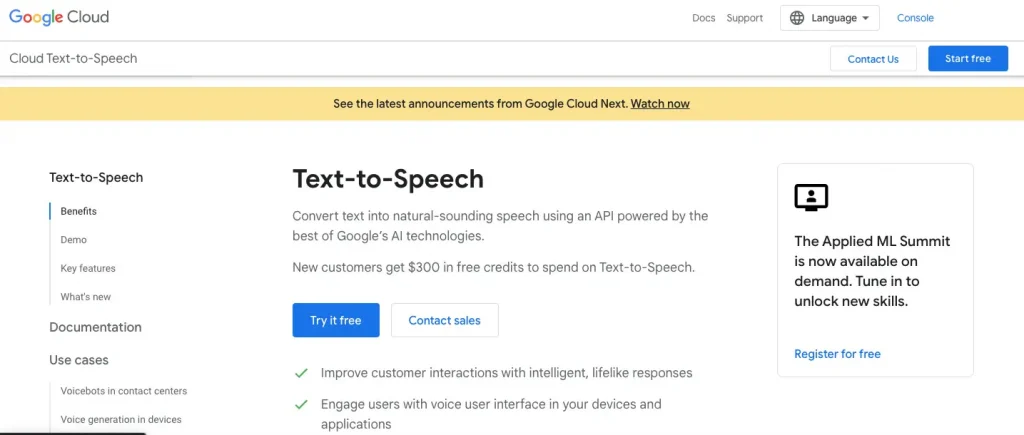
Google Cloud Text-to-Speech API empowers developers to integrate natural-sounding human speech into their applications. It can convert text or Speech Synthesys Markup Language (SSML) input into various audio formats like MP3 or LINEAR16.
Key Features and Benefits:
- 380+ voices and 50+ languages.
- Developed based on DeepMind’s speech synthesis.
- Offers the opportunity to create your unique voice.
- Gives you audio format flexibility: MP3, Linear16, OGG, Opus, etc.
- Pitch and volume flexibility.
Pricing:
Google Cloud Text-to-Speech API offers four pricing options: Neural2 voices at $16 per 1 million bytes, Studio voices at $160 per 1 million bytes, Standard voices at $4 per 1 million characters, and $16 per 1 million characters.
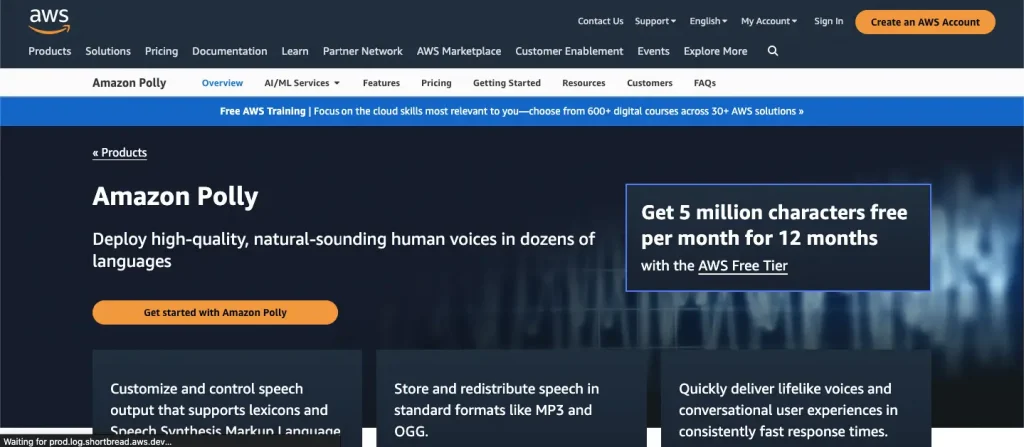
Amazon Polly API gives you the experience of transformative capabilities. It is a cutting-edge service that effortlessly converts text into lifelike speech. It empowers your applications to engage users and venture into innovative realms of speech-enabled products.
Key Features and Benefits:
- Free 5 million characters per month for 12 months.
- Freedom to customize speech that deploys lexicons and speech syntheses markup language.
- Storage and redistribution of speech in standard formats, such as MP3 and OGG.
Pricing:
With Amazon Polly API, you enjoy two plans: the Standard voices priced at $4 per 1 million characters and Neural voices priced at $16 per 1 million characters.
4. Synthesia API
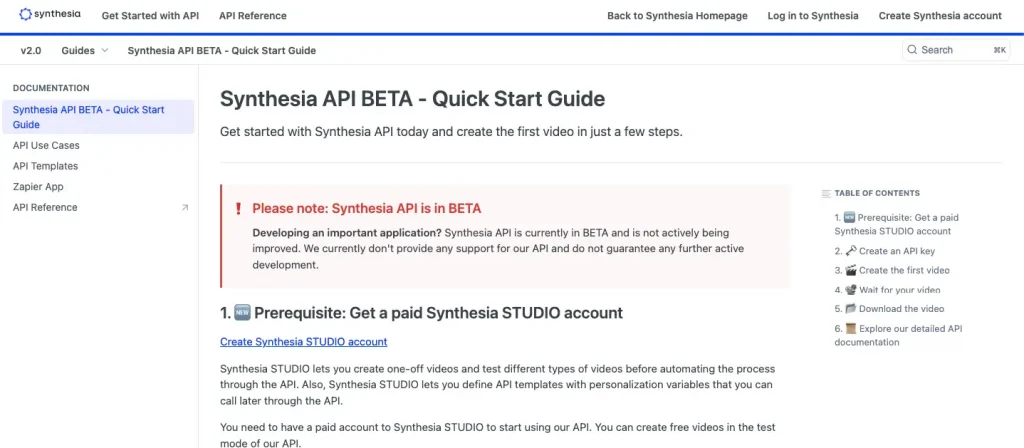
Synthesia API provides accurate and customizable text-to-speech synthesis with lifelike voices, offering natural-sounding audio output for various applications requiring high-quality speech synthesis and enhanced user experiences. What makes Synthesia special is that it is a text-to-speech API for videos.
Key Features and Benefits:
- You can integrate your videos into SaaS apps.
- You can create personalized videos.
- Create cinematic content.
How It Works:
- Get a paid Synthesia studio account.
- Generate your API key.
- Create and download your content.
Pricing:
- Synthesia offers a $30 per month personal plan. However, this plan lacks API features. To unlock API, you must go for the enterprise plan, for which you must book a demo.
5. Murf AI API
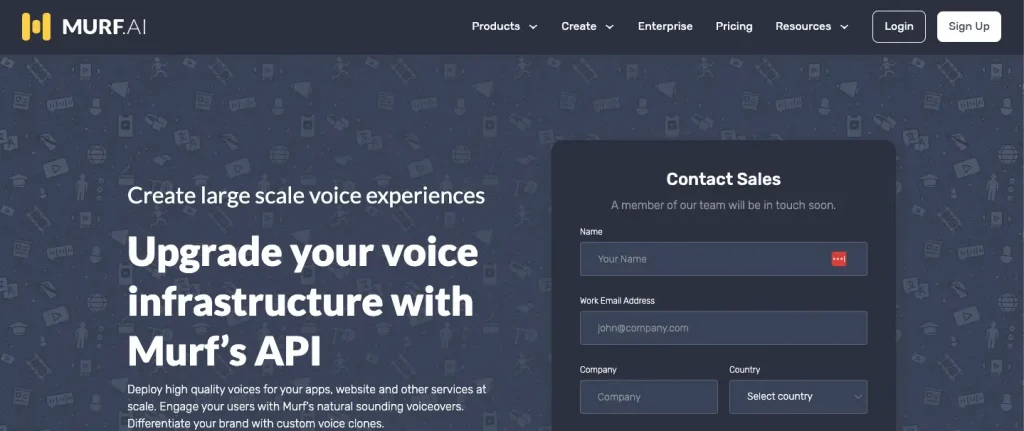
Murf is one of the most popular text-to-speech tools in the market today. It is one of the few APIs that allow you to clone your voice or create custom voice models. Let us run through its features and benefits.
Key Features and Benefits:
- Over 40 languages but only in English.
- 15-day trial for new registrants.
- Ability to clone any voice you want.
- Audio format flexibility.
How It Works:
- Fill out the API access form.
- Submit your exact requirements.
- While your API is being readied, go through the studio’s API documentation.
- Integrate your API into your websites and begin to create your content.
Pricing:
At Murf, access to API starts at $750 for three months.
6. HeyGen API
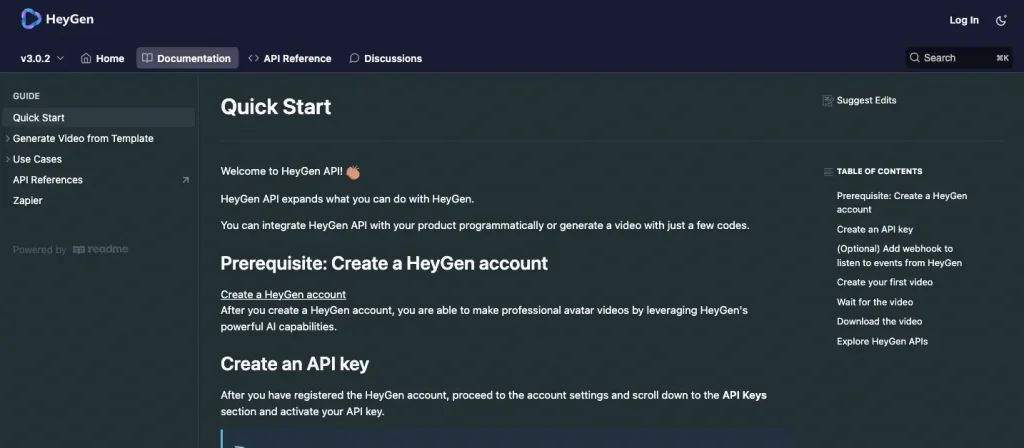
HeyGen is another text-to-speech tool, just like Synthesys, that can incorporate text-to-speech technology into videos.
Key Features and Benefits:
- Over 300 voices across 40+ languages.
- Natural-sounding voices.
- Multi-gender voices.
- Ability to add Webhook to your programs.
How It Works:
- Create a pro or enterprise HeyGen account.
- Generate an API key.
- Incorporate Webhook if you wish.
- Start creating your content.
Pricing:
For access to API support, you need to create a pro account, which costs $2 per minute at 120 minutes per month.
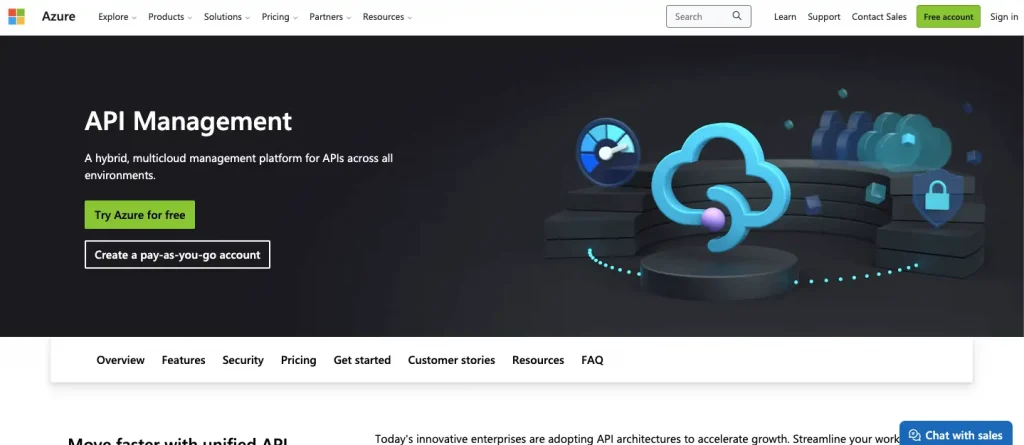
Azure text-to-speech API lets you build apps and services that deploy text-to-speech solutions that are human-like and interoperable across various platforms and devices.
Key Features and Benefits:
- It is cloud-based, which means you can access your data and build your services or apps anytime, anywhere.
- Customizable voices.
- Voice flexibility—you can adjust your speech parameters, such as pitch, pronunciation, intonation, pauses, etc., using speech synthesis markup language.
- Guaranteed data privacy and security with access to delete anything anytime.
Pricing:
Azure comes with four API plans: developer at $48.04, basic at $147.17 per month, standard at $686.72 per month, and premium at $2,795.17 per month.
8. Wellsaid text-to-speech API
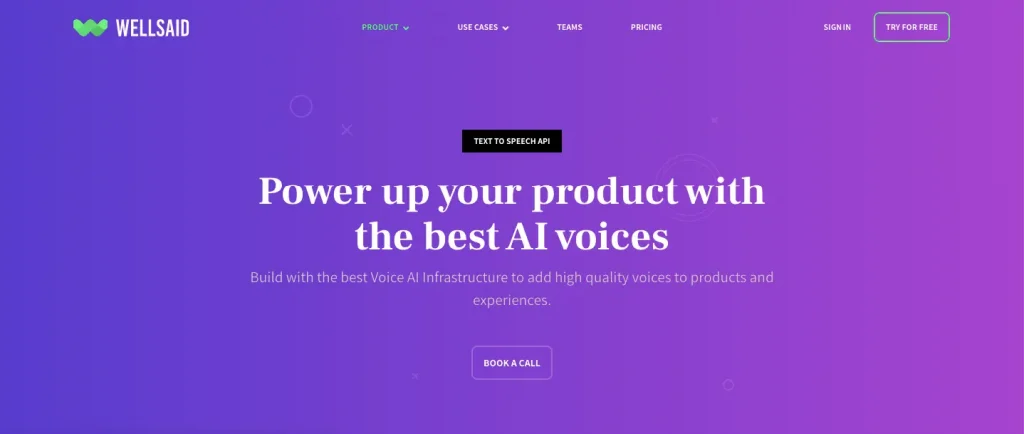
Wellsaid text-to-speech API is another platform that typifies convenience for developers. Let us see how.
Key Features and Benefits:
- You do not have to worry about hosting, scaling, and upgrading your voice architecture, as Wellsaid Lab handles all these.
- Lifelike synthetic voices.
- Restricted to MP3 audio format only.
- Scalable up to billions of characters per month.
Pricing:
The cost of accessing Wellsaid text-to-speech API is not expressly stated, so you might have to book a call to find out.
9. AI Studios text-to-speech API
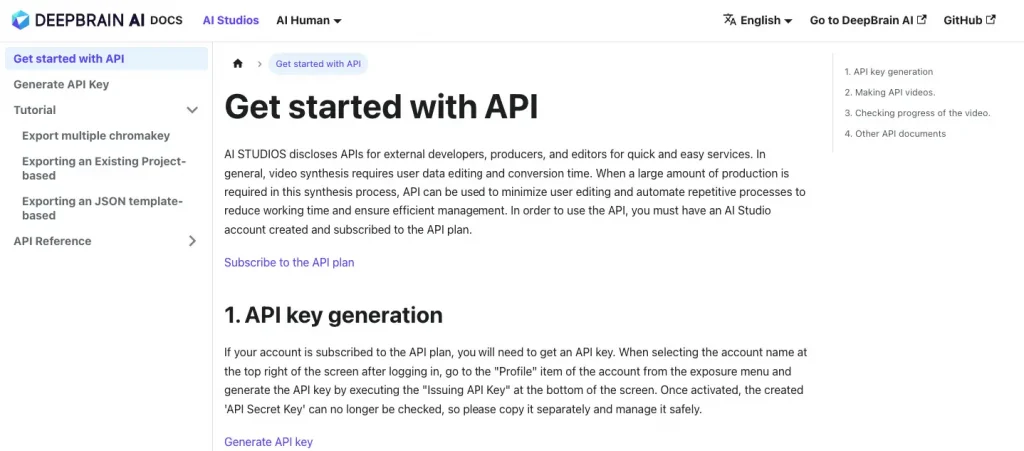
This API helps developers and producers streamline synthesis production by automating repetitive processes, minimizing editing, saving time, and ensuring efficiency.
Key Features and Benefits:
- Over 100 voices in more than 80 languages.
- 99% of its avatars are reality avatars.
- There is a library of templates that developers can choose from.
How It Works:
- Subscribe to the API pro plan.
- Generate your API key.
- Make your API content.
Pricing:
Using AI Studio’s API library requires you to subscribe to the pro or enterprise plans. The pro plan costs $225 per month.
10. Hour One API
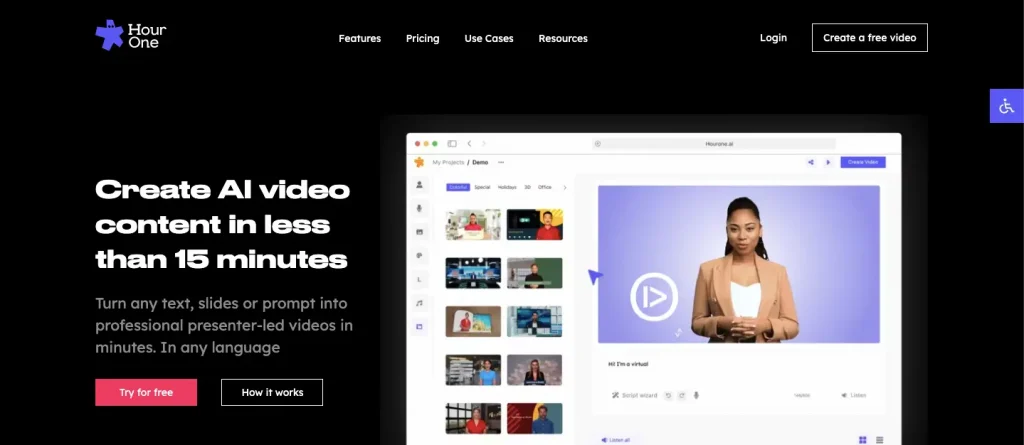
Hour One prioritizes simultaneity and multitasking. This is why this particular API empowers developers to create as many as 100s of text-to-speech content.
Key Features and Benefits:
- Autosave.
- Seamless audio file sharing.
- Adjustable volume and speed.
Pricing:
To use Hour One’s text-to-speech API, you must be subscribed to the Enterprise plan. To know more about the Enterprise plan, contact their support.
Frequently Asked Questions (FAQ)
What is text-to-speech API, and how does it work?
A text-to-speech API is a software interface that utilizes machine learning and natural language processing to convert written text into lifelike speech. By analyzing the text input, the API generates an audio output that mimics human speech patterns and intonations, providing a natural and immersive listening experience.
Text-to-speech APIs enable smooth integration of text-to-speech functionality into various applications and platforms, enhancing accessibility, user engagement, and content personalization.
What should I look out for when choosing a text-to-speech API?
User-friendliness, cost-effectiveness, human voice quality, extensive language support, flexible customization options, platform compatibility, lax usage limits, solid support, and documentation.
Is Synthesys a good option?
Yes, Synthesys API is one of the most viable options out there. It caters to any consumer wanting to employ it by easing the process to achieve the desired results.
Moreover, it contains as many languages, voices, programming languages, and flexible usage limits as are needed.
In Conclusion
The voiceover industry is witnessing a significant shift towards automation, and text-to-speech APIs are becoming increasingly popular.
However, the quality of text-to-speech APIs varies, and businesses must choose the best options for their needs. This article discussed the best ten text-to-speech APIs, exploring their features, benefits, pricing plans, etc.
It is important to note the criteria to consider when choosing a text-to-speech API. Criteria include voice quality, language support, customisation options, developer-friendliness, pricing and usage limits, platform compatibility, and support and documentation.
Among the options highlighted above, Synthesys API edges the others out slightly. While it is similar to many others in terms of pricing and voice flexibility, it possesses two standout features that make the job easy for developers and producers alike: programming language variations and usage limits.
Besides supporting 140 languages and 374 voices, it has a collection of 31 different programming language variations to aid in development diversity. Fortunately, it also comes with lax usage limits—a feature grossly lacking in the other options discussed.




